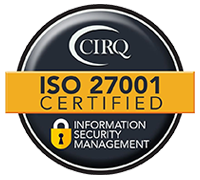Robots replacing humans is a fear that has been increasingly dominant in the media in recent years.
The increasing presence of technology in everyday life and the decreasing need for humans in a variety of tasks has led to the fear that humanity will one day be rendered obsolete.
Although technology has been present in quantitative data analysis, especially big data analysis, for a number of years, it is now increasingly being used in qualitative research approaches too, because of developments that allow robots to process natural language.
Technology can help qualitative research by providing textual analysis, sentiment analysis, image and video analysis and voice recognition, leading to interview analysis.
But to what extent can technology take over the role of qualitative researchers?
Ultimately, what value do humans bring to the process?
The Speed Advantage Of Technology In Qualitative Research Approach
A major strength of technology based qualitative research approach is the speed.
Although humans are fully capable of analyzing qualitative data, they can’t compete in terms of pace.
Analysis completed by robots is therefore appealing when clients are looking for quick insights.
Moreover, although the initial investment in the required technology is expensive, spending fewer hours on a project will ultimately make projects cheaper.
This is always appealing for clients and will give the researcher that uses it an edge over competitors.
Why Human Empathy Remains Essential In Qualitative Research Approach
However, while robots can now understand language, they are certainly still unable to empathize.
As empathy is crucial for successful market research, technology’s role is therefore limited.
In fact, using fast-paced machines to analyze the data is actually helpful.
The less time researchers spend analyzing data themselves, the more time they have to empathize with the respondents’ feelings.
It is this “system 2” thinking that ultimately delivers high-quality results to clients because it allows researchers to see the world through the eyes of the consumer.
Humans should utilize their strengths as great thinkers and collaborate with machine analysis to achieve the best results.
Reducing Bias Through Technology In Qualitative Research Approach
Moreover, although researchers aim to be objective, using machines reduces the risk of unconscious bias, which is crucial in providing accurate and actionable insights for clients.
However, although machines may not have prejudices, their general accuracy can still be questioned.
Although their understanding of natural language has improved, it still does not meet human standards.
Their ability to understand language traits such as humor and sarcasm, while contextualizing meaning, is still limited.
Likewise, machines can be over enthusiastic to categorize data when it may not fit under a specific label, a problem that is specifically relevant during sentiment analysis.
Humans on the other hand are more flexible, and can make judgement based on specific situations, rather than making routine decisions based on programming.
Admittedly, the sometimes tedious process of data analysis can lead to errors from humans too.
However, humans are definitely required in the analysis process, even if merely as quality control.
The Human Element In Qualitative Research Approach
Although technology has a clear place within qualitative research approach, we ultimately complete market research, both quantitative and qualitative, to understand people so that clients can meet their requirements with products and services.
It’s therefore important that humans remain present in the process and are not distanced from dealing with the data.
This is especially crucial because researchers’ knowledge of language, their flexible judgement and their ability to think, feel and empathize adds a value that machines cannot currently provide.
When humans and robots work alongside each other, utilizing each other’s strengths, the results will be the most successful and deep, actionable insights will be delivered to clients.
Ready To Enhance Your Qualitative Research Approach?
At L&E Research, we combine advanced technology with deep human insight to deliver comprehensive qualitative research results. Our experienced researchers understand that the best approach leverages both AI efficiency and human empathy to uncover actionable insights.
Contact us today to discuss how our qualitative research approach can provide the insights your business needs.











